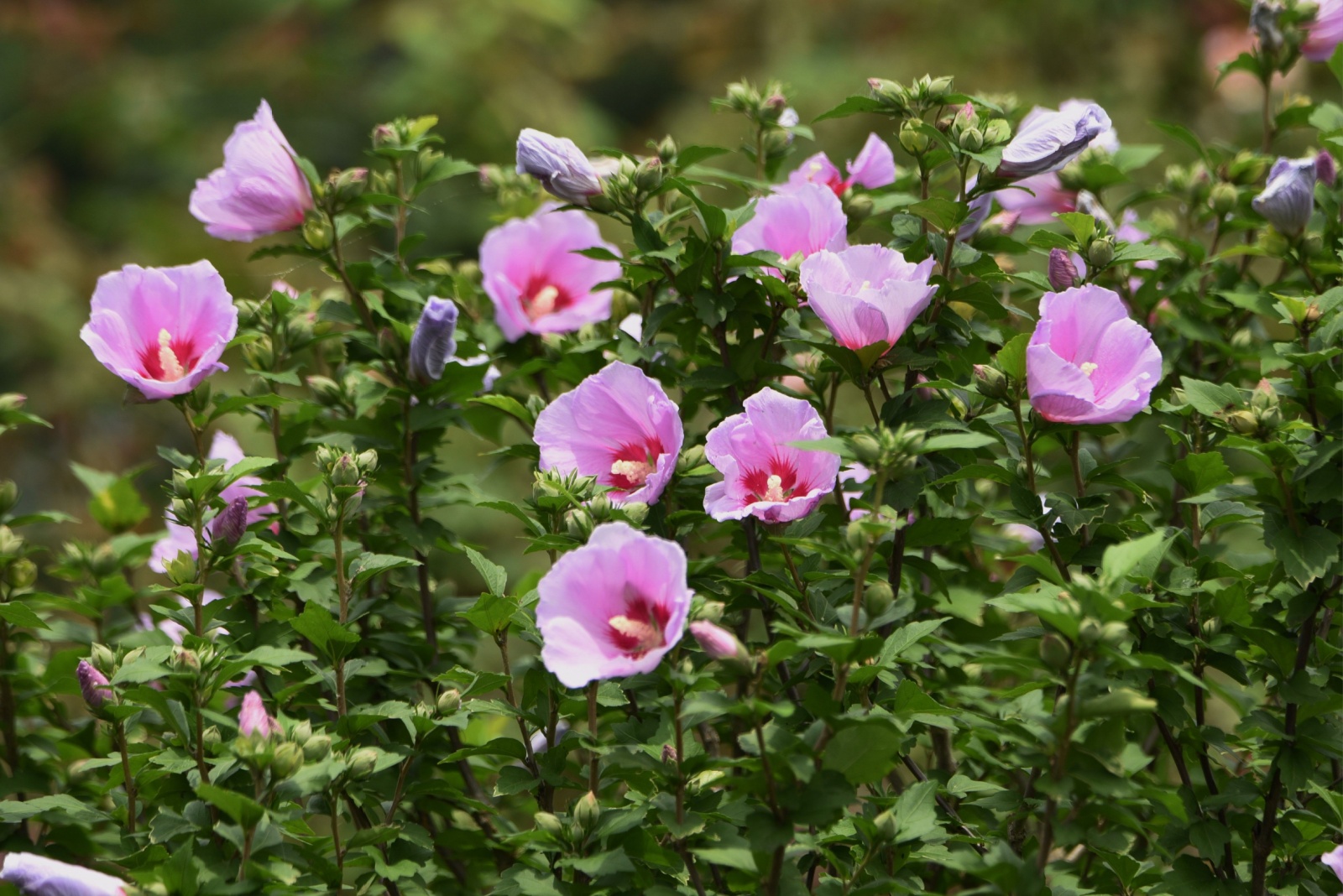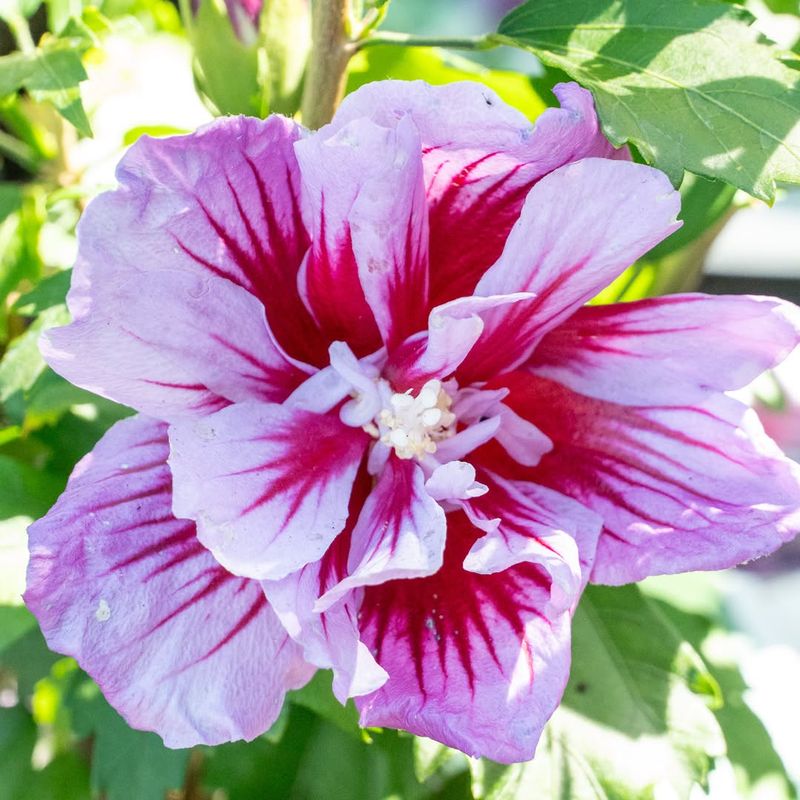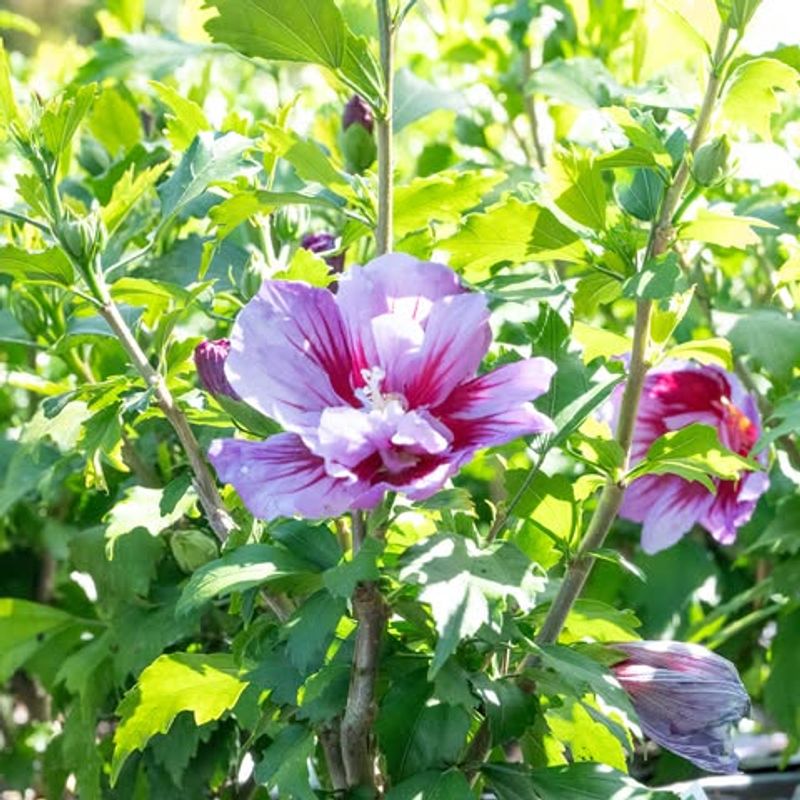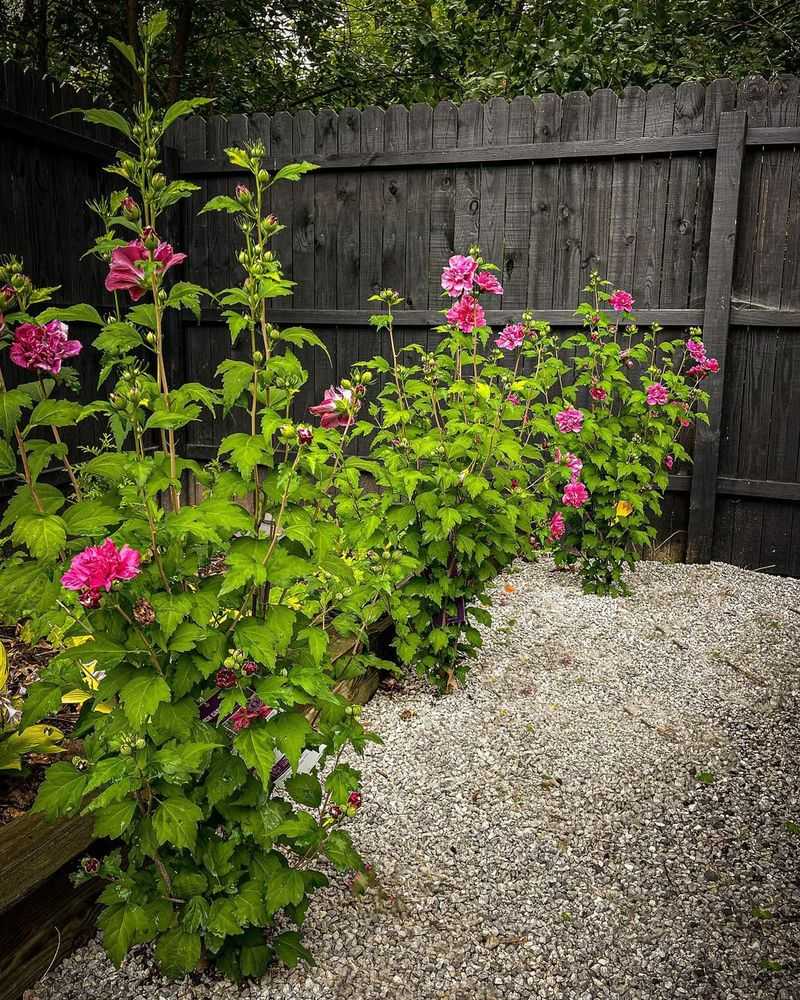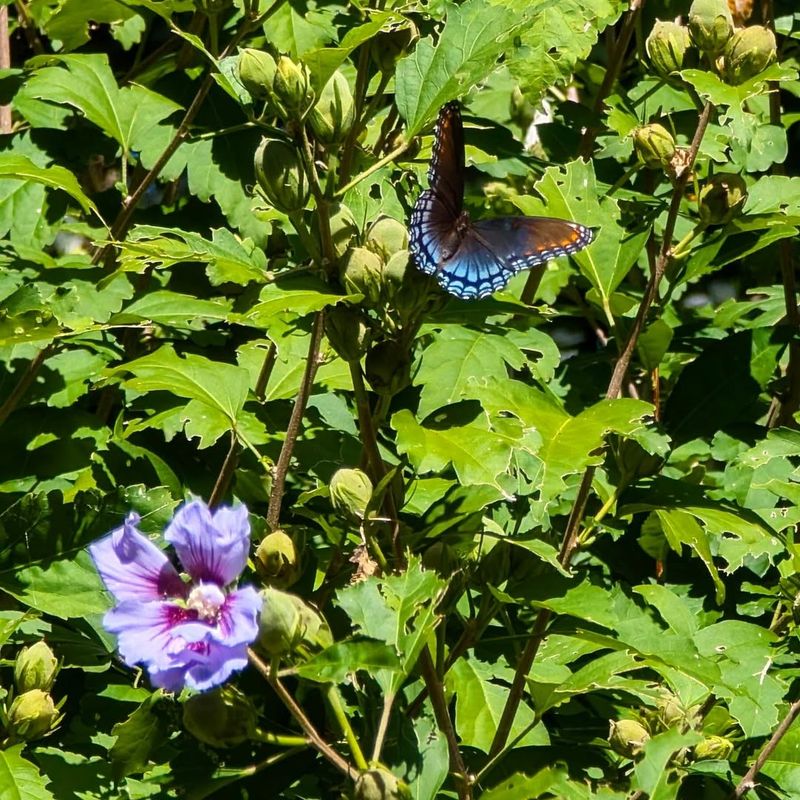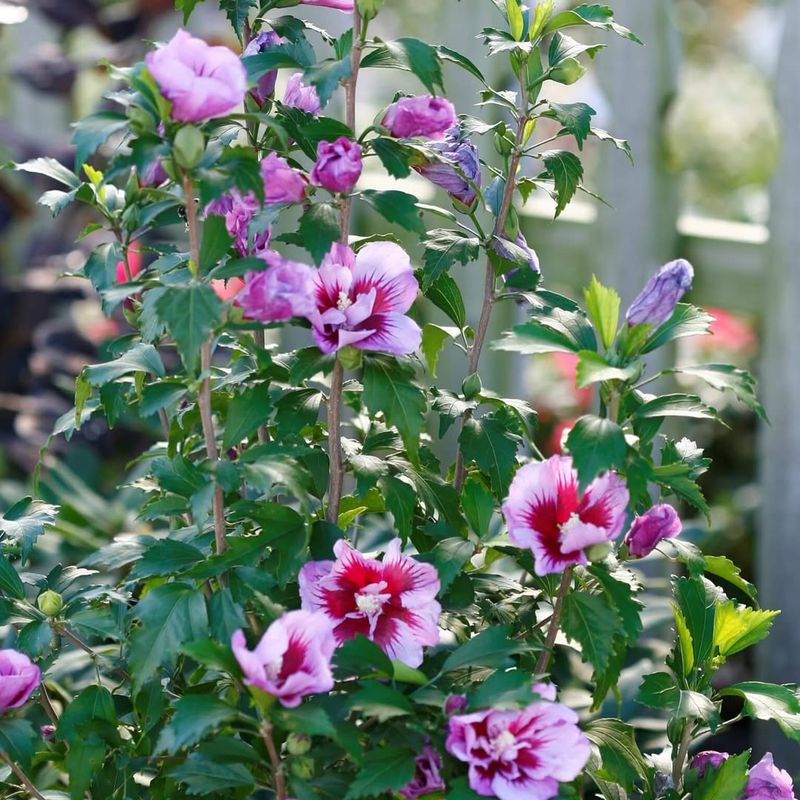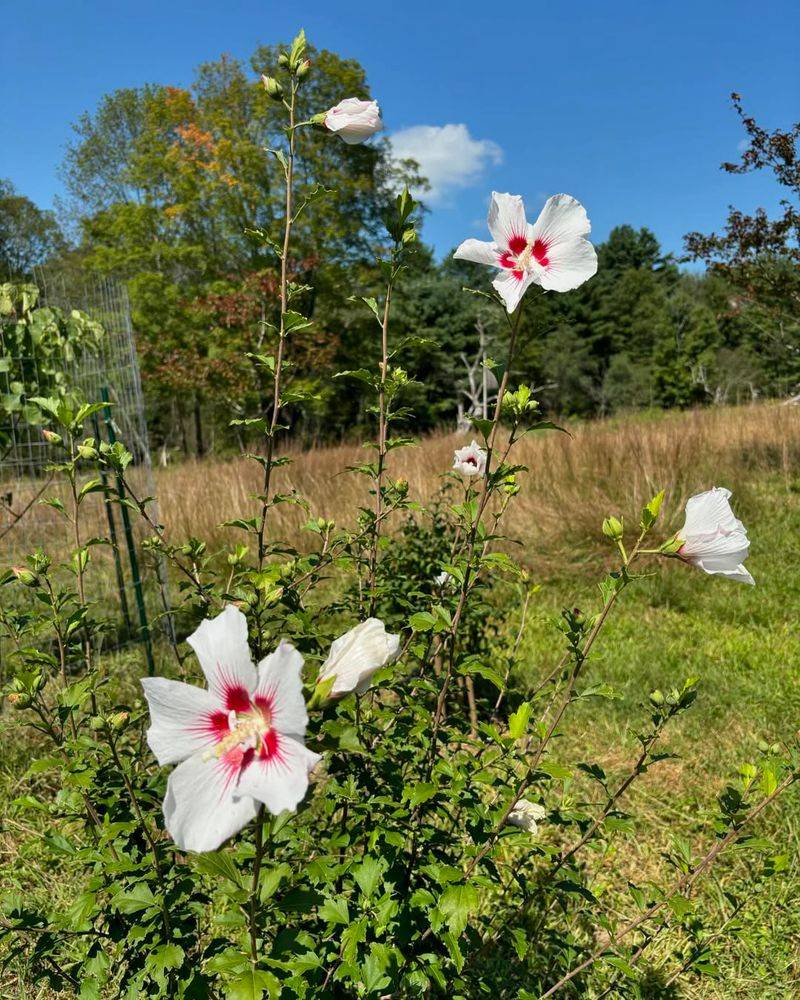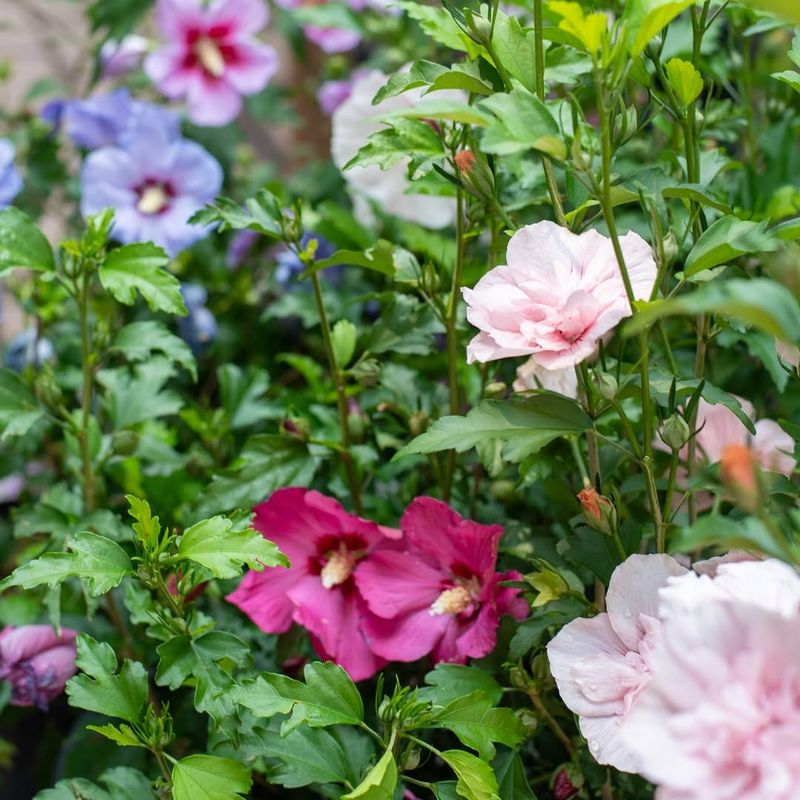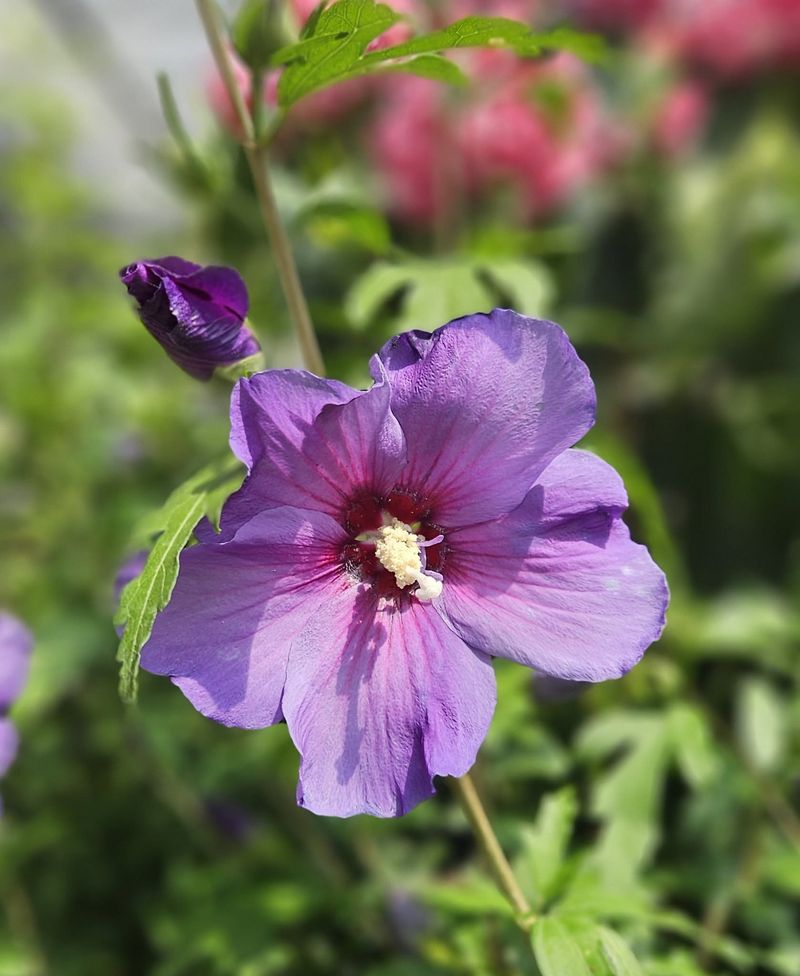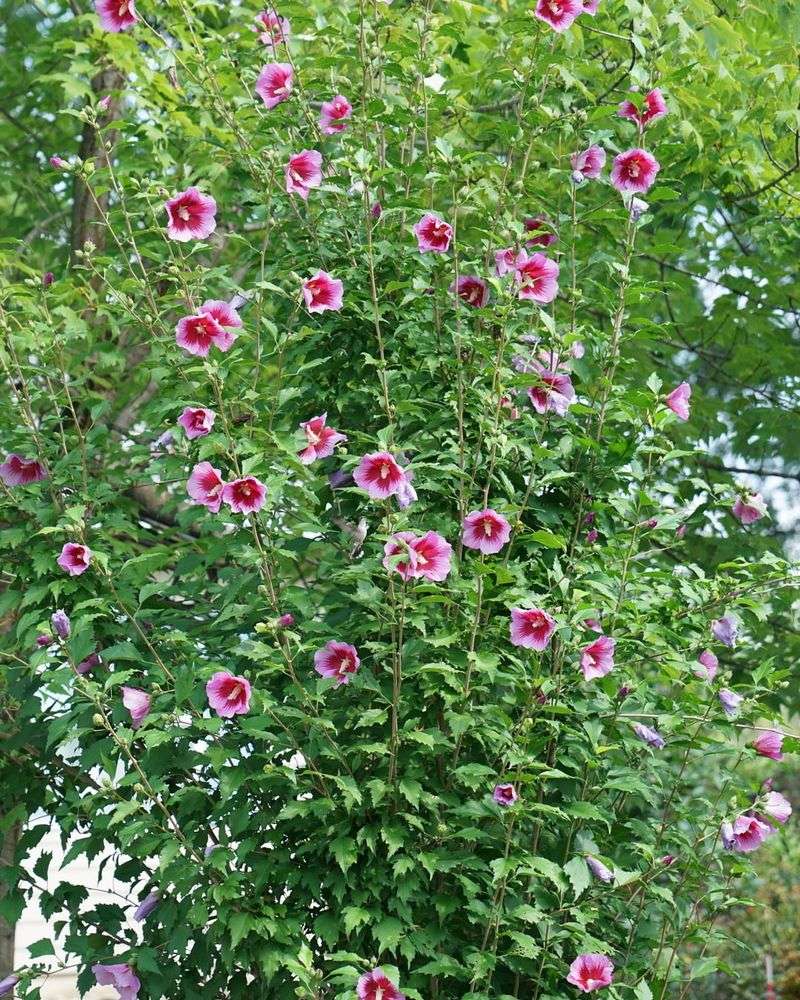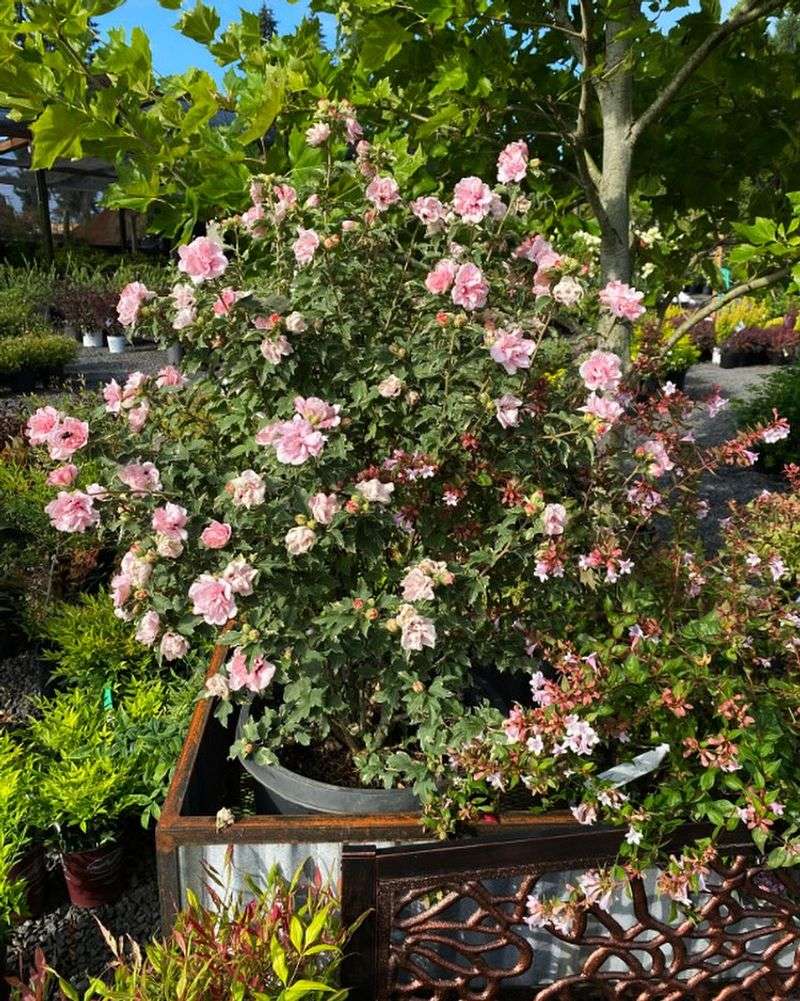Most flowering shrubs in Georgia give you a week or two of beauty before calling it quits, but Rose of Sharon plays by its own rules, pushing out fresh blooms for months. Each flower lasts only a day, yet the shrub produces so many buds that you’ll never notice.
New blossoms open every morning through the long Georgia growing season, creating an endless parade of pink petals that keeps your garden vibrant long after many other plants have wrapped up their show.
1. A Survivor That Thrives In Georgia Heat
Georgia summers can melt just about anything, but Rose of Sharon laughs in the face of scorching temperatures. While other plants wilt and struggle, this hardy shrub keeps growing strong through July and August.
Humidity doesn’t bother it either, making it perfect for Southern gardens. Once established, it handles drought conditions surprisingly well, though regular watering helps it look its best during peak bloom season.
2. Blooms That Last For Months
Most flowering shrubs in Georgia give you a week or two of beauty before calling it quits, but Rose of Sharon plays by its own rules, pushing out fresh blooms for months. Each flower lasts only a day, yet the shrub produces so many buds that you’ll never notice.
New blossoms open every morning through the long Georgia growing season, creating an endless parade of pink petals that keeps your garden vibrant long after many other plants have wrapped up their show.
3. Grows Almost Anywhere You Plant It
Picky plants can drive gardeners crazy, but Rose of Sharon isn’t one of them. Clay soil? Sandy soil? Somewhere in between? This shrub adapts to whatever you’ve got in your yard.
Full sun locations work best for maximum flowering, though it tolerates partial shade reasonably well. Georgia’s acidic to neutral soil pH suits it perfectly, and it doesn’t demand special fertilizers or constant attention to stay healthy and attractive.
4. Reaches An Impressive Height For Privacy
Need a living fence or privacy screen? Rose of Sharon grows tall enough to block unwanted views without turning into an unmanageable monster.
Most varieties reach eight to twelve feet high with a spread of six to ten feet wide. You can easily shape it through pruning to fit your space, or let it grow naturally into a beautiful, vase-shaped form that adds vertical interest to your landscape design.
5. Attracts Butterflies And Hummingbirds Daily
Want to turn your yard into a wildlife haven? Plant a Rose of Sharon and watch what happens. Butterflies visit constantly during daylight hours, fluttering from bloom to bloom.
Hummingbirds also find the tubular flowers irresistible, especially early in the morning. Bees appreciate the pollen too, making this shrub an excellent choice for pollinator-friendly gardens that support local ecosystems while looking absolutely gorgeous at the same time.
6. Requires Minimal Maintenance Year-Round
Busy people need plants that don’t demand constant fussing, and Rose of Sharon delivers exactly that. After the first growing season, it basically takes care of itself.
No special sprays, no complicated feeding schedules, no babying required. Prune it in late winter if you want to control its size or shape, but that’s optional. It resists most diseases and pests naturally, saving you time, money, and frustration compared to needier landscape plants.
7. Multiplies Easily Through Seeds And Cuttings
Got one Rose of Sharon and want more? You’re in luck, because propagating this plant is surprisingly simple.
It produces seeds freely, and many will sprout on their own around the parent plant. You can also take stem cuttings in early summer and root them in moist soil. Within a year or two, you’ll have new shrubs to plant elsewhere in your yard or share with neighbors who admire your beautiful pink blooms.
8. Comes In Multiple Pink Shades And Patterns
Not all Rose of Sharon varieties look identical, giving you fun options to explore. Some feature pale, cotton-candy pink petals, while others sport deep magenta hues.
Certain cultivars display darker pink or red centers that create stunning contrast against lighter outer petals. You’ll find single-petal varieties that look delicate and airy, plus double-flowered types that appear full and ruffled. Mix different shades together for an eye-catching display that adds depth to your landscape.
9. Handles Georgia’s Unpredictable Winter Weather
Georgia winters can be weird, swinging from mild to surprisingly cold within days. Rose of Sharon handles these temperature rollercoaster rides without missing a beat.
It’s fully deciduous, meaning it drops its leaves and goes dormant when cold weather arrives. This natural cycle protects it from freeze damage that harms evergreen plants. Come spring, it leafs out reliably and gets back to growing, no matter what winter threw at it.
10. Serves Multiple Purposes In Landscape Design
Smart gardeners appreciate plants that can do more than one job, and this shrub excels at versatility.
Use it as a specimen plant to create a focal point, plant several in a row for a colorful hedge, or tuck it into mixed borders alongside perennials. It works beautifully near patios where you can enjoy the flowers up close, or place it in the background to add height and structure to layered plantings.
11. Brings Southern Charm To Any Garden Style
Whether your yard leans traditional, cottage-style, or modern, Rose of Sharon fits right in. Its classic blooms complement old-fashioned Southern gardens perfectly, echoing the charm of historic plantations.
Contemporary landscapes benefit from its clean lines and long bloom season too. The bright pink flowers add warmth and personality without overwhelming other design elements, making it a flexible choice that adapts to your personal style and vision for your outdoor space.

